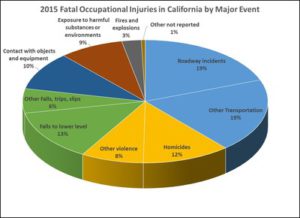Workplace Violence Prevention & Training Certification – Online & Onsite Options
Workplace violence is one of the fastest-growing safety concerns facing businesses today. Employers have a responsibility to protect their employees, clients, and visitors by developing a clear workplace violence prevention plan. Our Workplace Violence Prevention Training is designed to meet OSHA guidelines, comply with state laws such as California SB 553, and provide employees with the tools they need to recognize, respond to, and prevent violent incidents in the workplace.
Available in online self-paced and onsite instructor-led formats, this training includes certification upon completion and industry-specific modules for healthcare, retail, corporate offices, and other high-risk industries.
By the end of this course, participants will be able to:
Identify the warning signs of potential workplace violence.
Apply proven de-escalation techniques to defuse tense situations.
Understand employer obligations under OSHA and state regulations (including California SB 553 compliance).
Contribute to a safer workplace by supporting a comprehensive violence prevention plan.
- Content: Workplace Violence Prevention
- Version: Supervisor & Employee
- Course Length: 1 Hour
- Languages Available: English
- Price: $19.99 (single user e-learning enrollment)
Our Violence in the Workplace Prevention Training was created to help employers and employees deal with the growing issue of workplace violence and create a dialogue about the shared responsibility of maintaining a safe workplace. Preventing workplace violence is a difficult challenge. Workplace Violence physically injures (and in some cases kills) employees, disrupts business, damages morale, creates expenses (medical, legal), and hurts your reputation.
Our workplace violence training for employees course will help supervisors and employees learn to identify behavior and language that represents the potential to escalate into violence. This includes verbal threats, verbal abuse, yelling, pushing, kicking, hitting, stalking, and physical violence including lethal violence.
 One in five (20%) of all California workplace deaths identified in 2015 were attributed to be due to violence and other injuries by persons or animals. The incidence of workplace homicides in 2015 accounts for 12% of all workplace deaths in the state.
One in five (20%) of all California workplace deaths identified in 2015 were attributed to be due to violence and other injuries by persons or animals. The incidence of workplace homicides in 2015 accounts for 12% of all workplace deaths in the state.
Learning Objectives - Workplace Violence Awareness
- How to recognize potentially violent workplace situations
- Techniques to stop escalating situations
- Security procedures to ensure the safety of employees during violent situations
- Identifying signs and symptoms of domestic violence
- Reviewing laws against violence in the workplace and the duties of the employer
- Warning signs of potential violence in the workplace
- Examining preventative measure
- Steps for developing an effective Workplace Violence Prevention policy
- Creating a response plan
Other Objectives of Violence in the Workplace Prevention
Employers do not have an unlimited right to pry into an employee’s
private life, but do have a responsibility to take reasonable steps to detect violence or threats that may affect their business and their employees.
Our course helps employers identify important warning signs of domestic violence and how these issues can affect the employer.
This includes:
- Unexplained bruises or injuries
- Disruptive phone calls
- Disruptive visits from partner
- Unexplained absences
- Sudden requests to move to less public area of job site
- Known court appearances
- Anxious, moody, depressed
- Recent Break-up
Case Study: Workplace Violence is Nationwide and Growing
 On December 2, 2015, 14 people were killed and 22 were seriously injured in a terrorist attack at the Inland Regional Center in San Bernardino, California, which consisted of a mass shooting and an attempted bombing. The perpetrators, Syed Rizwan Farook and Tashfeen Malik, a married couple living in the city of Redlands, targeted a San Bernardino County Department of Public Health training event and Christmas party, of about 80 employees, in a rented banquet room. Farook was an American-born U.S. citizen of Pakistani descent, who worked as a health department employee.
On December 2, 2015, 14 people were killed and 22 were seriously injured in a terrorist attack at the Inland Regional Center in San Bernardino, California, which consisted of a mass shooting and an attempted bombing. The perpetrators, Syed Rizwan Farook and Tashfeen Malik, a married couple living in the city of Redlands, targeted a San Bernardino County Department of Public Health training event and Christmas party, of about 80 employees, in a rented banquet room. Farook was an American-born U.S. citizen of Pakistani descent, who worked as a health department employee.
On December 1, 2016, nearly one year after the attack, authorities speculated on Farook’s forced participation in the training event and Christmas party as the trigger. Newly discovered emails indicated that Malik had objected to the party and did not want her husband to participate. San Bernardino Police Chief Jarrod Burguan said in an interview with ABC News that Malik stated that “she didn’t think that a Muslim should have to participate in a non-Muslim holiday or event” in an online account.
Source: https://en.wikipedia.org/wiki/2015_San_Bernardino_attack
Case Study: The Cost of Workplace Violence
The families of two women killed by a co-worker at a northeast Philadelphia plant 4 1/2 years ago were awarded $38.5 million in punitive damages from a security guard firm. LaTonya Brown, 36, and Tanya Wilson, 47, were killed and another employee wounded by a deluded employee who thought co-workers were spraying her with toxic chemicals, according to authorities.
Yvonne Hiller, 48, who is serving two life terms in the slayings, had been suspended after making violent, profanity-laced threats but returned from her car minutes later with a loaded .357 Magnum, authorities said. Attorneys for the families said security guards failed to protect employees during the rampage.
The impact of workplace violence on employers cannot be precisely measured, but its obvious impact includes a reduction in the workforce due to injuries or death, and the cost to repair or reconstruct physical damage incurred on workplace property. In addition, employers face an increase in workers’ compensation payments and medical expenses and exposure to potential liability for their failure to maintain a safe and secure workplace. With all of these factors to consider, training to identify and prevent potential workplace violence issues is a small price to pay.
Case Study: Domestic Violence
On December 23, 2016, a retired police officer in Faribault, Minnesota, fatally shot his ex-wife before turning the gun on himself inside the city’s chamber of commerce. Police later identified the deceased as Richard Larson, 61, and Barbara Larson, 59, according to Faribault police Capt. Neal Pederson.The shootings took place less than a week after Barbara Larson served her former husband with a harassment restraining order, Pederson said. The couple divorced in 2014.
Source: http://www.twincities.com/2016/12/23/two-found-dead-inside-faribault-chamber-of-commerce-building/
As a result, management needs to understand the magnitude of violence in the workplace, how to identify potentially violent employees (and non-employees), and be able to effectively manage incidents before they occur.
Violence in the workplace is the second leading cause of occupational death in the US. It is the number one killer of women at work and the number two killer of men at work. More than 1,400 work-related homicides occur each year.
Researchers at the National Institute for Occupational Safety and Health estimate that the average cost of one workplace homicide incident, during a recent ten-year period, was $800,000.
Case Study: Inova’s SAFE team addresses workplace violence
In a recent case study published in April 2023 by the American Hospital Association (AHA), Inova Health System attributes its success in minimizing both the severity and occurrence of injuries within its emergency departments, behavioral health units, and system-wide, to the collaborative efforts of its multidisciplinary team, Safety Always for Everyone (SAFE). The SAFE team, an amalgamation of experts from various fields including nursing, medicine, behavioral health, security, chaplaincy, pharmacy, among other crucial departments, is committed to addressing and alleviating violent incidents. The team’s broad responsibilities extend to conducting in-depth debriefings, crafting and updating relevant policies and procedures, and continuously driving Inova’s initiatives to counter workplace violence.
Why Choose Compliance Training Group?
Certification Provided – Printable certificate and optional wallet card.
Meets OSHA & State Requirements – Including California’s new SB 553.
Industry-Specific Options – Tailored modules for healthcare, retail, and corporate environments.
Flexible Delivery – Online training (24/7 access) or onsite sessions with expert trainers.
Workplace Violence in Different Industries
Healthcare: Learn strategies to protect staff in hospitals and clinics, where violence incidents are among the highest in any sector.
Retail & Customer-Facing Roles: Training focuses on de-escalation and robbery/active threat response.
Corporate Offices: Emphasis on HR policies, internal threats, and conflict management.
Compliance with California SB 553
For organizations in California, our training provides everything needed to comply with SB 553, which requires employers to establish and implement a workplace violence prevention plan effective July 2024.
Frequently Asked Questions – Workplace Violence Prevention Training (FAQ)
What is workplace violence prevention training?
Workplace violence prevention training teaches employees and employers how to identify, prevent, and respond to threats or acts of violence in the workplace. It typically covers early warning signs, de-escalation strategies, and compliance with state or federal requirements such as OSHA and California SB 553.
Is workplace violence training required by law?
Yes. While OSHA requires employers to provide a safe workplace, states like California now mandate training under SB 553, which requires all employers to create and implement a workplace violence prevention plan. Many industries (healthcare, retail, education) also have specific regulations and heightened expectations for violence prevention training.
Who should take workplace violence training?
All employees should participate, from frontline staff to supervisors and HR personnel. Certain industries—healthcare, retail, hospitality, and public service—face higher risks and benefit most from comprehensive training.
Will participants receive certification?
Yes. Upon successful completion, participants receive a certificate of completion, and organizations can request a wallet card for easy verification. Certificates can be used to demonstrate compliance during audits or inspections.
How long does the workplace violence training take?
Online modules are typically completed in 60–90 minutes. Onsite training sessions can be customized from a 2-hour workshop to a full-day program, depending on organizational needs.
How often should workplace violence training be completed?
Annual refresher training is recommended, especially in states with strict compliance requirements. California’s SB 553 specifically requires that training be included in the workplace violence prevention plan and updated as policies or risks change.
How does workplace violence training benefit employers?
Training not only helps employers comply with OSHA and state laws but also reduces liability, improves employee morale, and creates a safer work environment. It demonstrates due diligence and a proactive commitment to employee safety.
Workplace violence is a preventable risk that affects every industry. By investing in workplace violence prevention training, employers protect their people, reduce liability, and ensure compliance with laws like OSHA and California SB 553. Our program provides the knowledge, certification, and practical skills needed to create a safer, more resilient workplace.
While workplace violence can take many forms, one of the most urgent threats is an active shooter incident. Our Active Shooter Awareness Training equips employees with the knowledge to respond quickly and appropriately in these high-risk situations.

